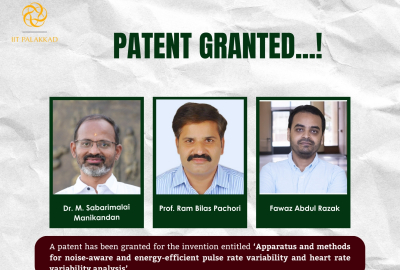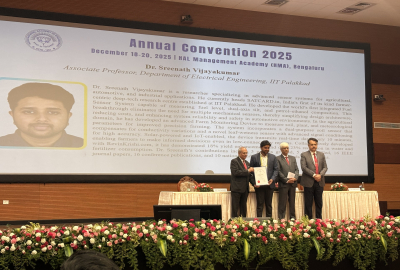
Team led by IIT Palakkad scientist provide critical analyses on how Covid19- triggered inflammatory disease in children different from Kawasaki disease
During the early days of Covid-19 pandemic, medical doctors in Europe and the US found a small section of young patients either recovered from Covid-19 or previously exposed to SARS-CoV-2 developing a novel multi-systemic disease condition which has a close resemblance to an earlier-known illness called Kawasaki disease.
Called Multisystem Inflammatory Syndrome in Children (MIS-C) in the US and Paediatric inflammatory multisystemic syndrome (PIMS) in Europe, the new condition had several overlapping symptoms and manifestations similar to that of Kawasaki disease, prompting a section of experts to speculate both belonged to the same disease spectrum.
Now, a team of international researchers led by an Indian scientist, which analysed reports emerging from different labs around the world has concluded that they are distinctly different diseases even though they share many symptoms and elicit somewhat similar immune response. They also found that Kawasaki disease and MIS-C have varying degrees of hyper inflammation and misdirected immune
responses.
In a review published in Nature Reviews Rheumatology on October 29, the researchers led by Jagadeesh Bayry, Professor at the Department of Biological Sciences & Engineering at the Indian Institute of Technology (IIT) Palakkad, bring much more clarity on manifestations of both these syndromes, making it possible for clinicians to offer better clinical outcomes to those children suffering MIS-C.
“The significance of the review lies in the fact that it provides a nearly complete picture of MIS-C including its pathogenesis and offers critical comparison with Kawasaki disease,” says Professor Bayry, who joined the IIT early this year after 15 years at the French National Institute of Health and Medical Research, INSERM.
Discovered more than 50 years ago, Kawasaki disease is a paediatric, systemic inflammatory vasculitis. The disease leads to the inflammation of blood vessels. The most important long-term consequences of Kawasaki disease relate to abnormalities of the coronary artery, and it is now the most common cause of acquired heart disease in children in the developed world. A very small percentage of children suffering from Kawasaki disease may develop aneurysms (weakening or bulging of an artery wall), which may increase the risk of blood clots in the coronary arteries, potentially leading to a heart attack or cause life-threatening internal bleeding.
Even though both MIS-C and Kawasaki disease have some overlapping symptoms, there are important epidemiological and clinical differences, the scientists concur. Both the diseases are triggered by infectious diseases (though the triggers are discrete!) and are associated immune system alteration, systemic inflammation and cytokine storm. But there is a distinct difference in frequency of severity reported in these two diseases. While lesser than 10 per cent of Kawasaki disease are seen to develop more severe Kawasaki disease-shock syndrome, which requires the use of intravascular fluid resuscitation and vasoactive medication, shock and depressed left ventricular systolic function are more frequent with MIS-C, with reports indicating 40– 80 per cent of patients present with shock.
Cardiac involvement too is more prevalent and severe in MIS-C than in Kawasaki disease. Although a quarter of untreated patients with Kawasaki disease will develop coronary artery abnormalities, in the current era with a high level of clinical suspicion as well as early diagnosis and treatment, the incidence of coronary artery abnormalities in Kawasaki disease is less than 10 per cent. By contrast, incidence rates of MIS-C reported in various patient populations ranged between 14 and 48 per cent. However, due to the adaptation of streamlined management strategies, the incidence of coronary artery abnormalities is low of late.
While Kawasaki is typically a disease of young children below the age of 5, MIS-C has been reported in a wide age range from 1.6 to 20 years, with a median age of 6– 11 years, they say.
Similarly, unlike Kawasaki disease, there is a surprising lack of reports of MIS-C from Japan and East Asian countries. In Europe and the US, on the other hand, MIS-C is most commonly encountered in children of African and Hispanic lineage. These epidemiological differences suggest that although MIS-C has many observable similarities to Kawasaki disease, they are essentially distinct syndromes, the scientist explain.
Chetan Sharma and Madhusudan Ganigara, paediatric cardiologists at Children’s Hospital of San Antonio in Texas and the University of Texas Southwestern Medical Center in Dallas respectively, are the joint first authors of the paper. Among other authors are Caroline Galeotti of The Bicêtre Hospital in France, Joseph Burns and Denise A. Hayes of Cohen Children’s Medical Center in New York, Fernando M. Berganza of Driscoll Children’s Hospital in Texas, Davinder Singh-Grewal of the Sydney Children's Hospitals Network in Australia, Suman Bharath of the John F Kennedy Medical Center in New Jersey in the US, and Sujata Sajjan of Northwell Health Laboratories in New York.
The current review also brought to fore many other facets about MIS-C. With the help of studies carried out elsewhere it pointed to a key role played by spike protein of SARS-CoV-2 in triggering the cascade of inflammatory changes that eventually lead to MIS-C. It also highlighted the role of mutations in immunoregulatory genes and dysregulated activation of immune cells and auoantibodies contributed to the MIS-C manifestation.
“As long-term consequences of these patients are not known, regular follow-up of these patients is required,” Bayry says.
Reference:
Sharma C, Ganigara M, Galeotti C, Burns J, Berganza FM, Hayes DA, Singh-Grewal D, Bharath S, Sajjan S, Bayry J. 2021. Multisystem inflammatory syndrome in children and Kawasaki disease: a critical comparison. Nature Reviews Rheumatology. doi: 10.1038/s41584-021-00709-9. Epub ahead of print, Oct 29, 2021. https://www.nature.com/articles/s41584-021-00709-9






